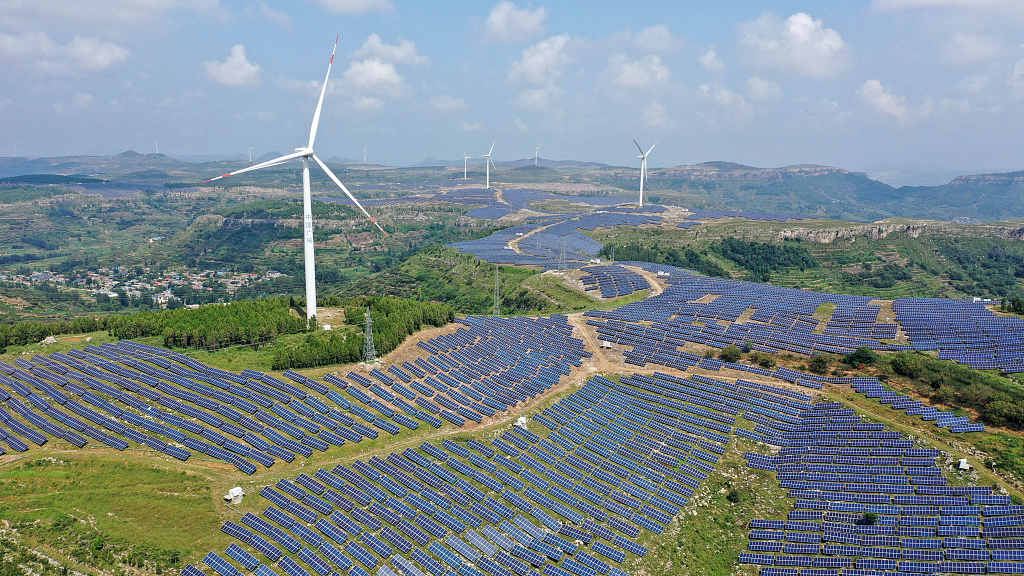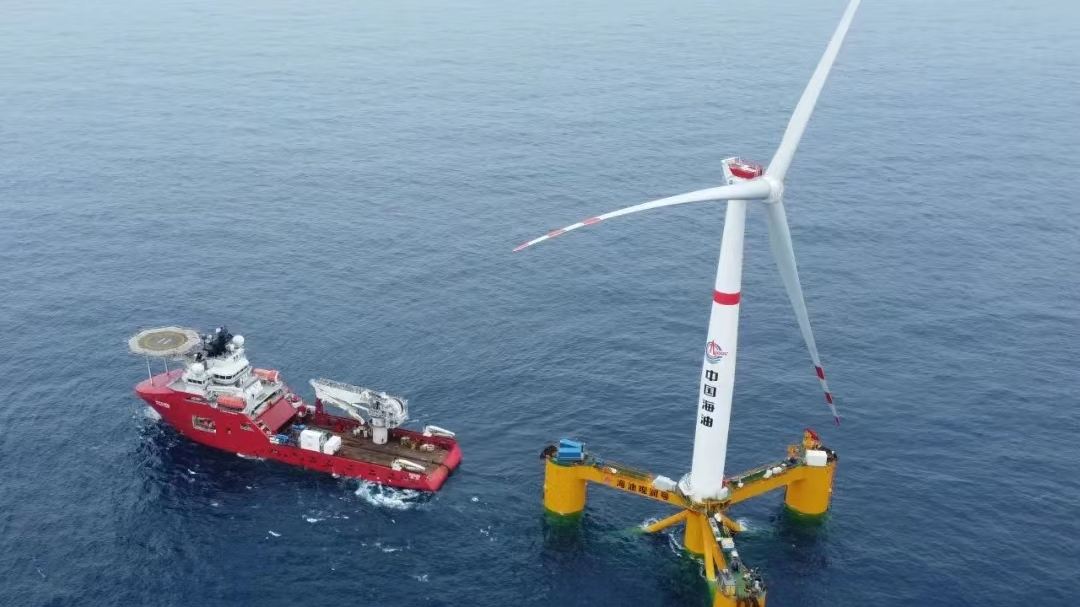
Wind and photovoltaic power plants in Zaozhuang City, east China's Shandong Province, August 16, 2021. /CFP
Wind and photovoltaic power plants in Zaozhuang City, east China's Shandong Province, August 16, 2021. /CFP
Thursday is Global Wind Day, an annual event for discovering wind, its power and the possibilities it holds to reshape the energy systems, economies and growth.
According to a report released by the International Energy Agency in early June, global renewable power capacity is expected to grow by about a third this year, with solar and wind leading rapid expansion.
Of all the countries, China will consolidate its leading position, accounting for 55 percent of global additions of renewable power capacity in both 2023 and 2024, it added.
China has been promoting the construction of large-scale wind power and photovoltaic (PV) bases since the beginning of this year. The newly installed wind and solar power capacity reached 820 million kilowatts by the end of April, accounting for 30.9 percent of the country's installed power generation, according to the country's National Energy Administration (NEA).
The country's solar power capacity has become the country's second-largest source of power supply, second only to thermal power, the NEA said.
The first quarter also saw a $14 billion total export volume of PV products, an increase of 15 percent compared to the same period last year.
Read more: China's installed non-fossil electricity generation exceeds 50 percent of total

China's first deep-sea floating wind power platform, the Haiyou Guanlan, is connected to the power grid. May 20, 2023. /CFP
China's first deep-sea floating wind power platform, the Haiyou Guanlan, is connected to the power grid. May 20, 2023. /CFP
China's wind and solar projects
China has commenced construction on several large-scale wind- and solar-powered bases in deserts in recent years. Located mainly in northwest China, they have a combined capacity of nearly 100 million kilowatts for the first phase of projects.
A new project in the Gobi Desert started construction in the Tengger Desert in northwest China's Ningxia Hui Autonomous Region on June 11. Once completed, it will send power to the country's central province of Hunan.
The country is currently planning a second batch of large-scale projects, some of which have been under construction, according to an NEA official.
According to a plan issued by the National Development and Reform Commission (NDRC) and the NEA in 2022, China will build wind and solar power bases with an installed capacity of 455 million kilowatts by 2030.
China's southwest can support both hydro and wind power due to its varied landscape, comprising rivers and mountains. An 800-megawatt wind power plant was connected to the grid in early May in Qujing City, Yunnan Province, marking the country's largest installed wind farm built on the plateau.
The country also deployed a floating wind power platform in an offshore oil field 136 kilometers from Wenchang City, south China's Hainan Province to obtain green energy from deep sea.
In addition, grid parity was achieved through an offshore wind power project last year, with the price of wind-generated electricity fed to the grid equaling that of coal without subsidies.
Relative research and development
An onshore wind turbine with a 230-meter rotor diameter rolled off the production line in northeast China's Daqing City in late May. The rotor diameter is equal to the combined wingspan of 3.6 Boeing 747 jets and is said to be the largest one used on the mainland.
Offshore turbine development also progressed. On Wednesday, three 123-meter blades were transported to an offshore wind farm in east China's Fujian Province for installation. The turbine's rotor diameter reaches 252 meters, equivalent to six C919 passenger planes connected at the end.
At this year's Geneva International Exhibition of Inventions, Chongqing University won a gold medal for its invention, a pre-stressed concrete-filled steel tube lattice tower, according to local TV news. The tower is said to be stronger, stiffer and lower cost.
The Chongqing-based university installed the tower in east China's Shandong Province. It is expected to generate 12.4 million kWh of electricity annually, saving 4,000 tonnes of standard coal, with the cost lowered by 15 percent, according to Wang Yuhang, a professor at the university.